Bandelier National Monument: All You Need to Know Before Your Visit
The Bandelier National Monument in Los Alamos is a must-see destination if you’re heading to New Mexico. With numerous trails, intriguing rock cavities, and various wildlife species, your day at this landmark is guaranteed to be one you’ll remember.
To help you make the most out of your time at the Bandelier National Monument, we’ve put together this visitor guide. Here, you’ll find the top things to do during your visit and learn some important information that will make your journey smooth and exciting.
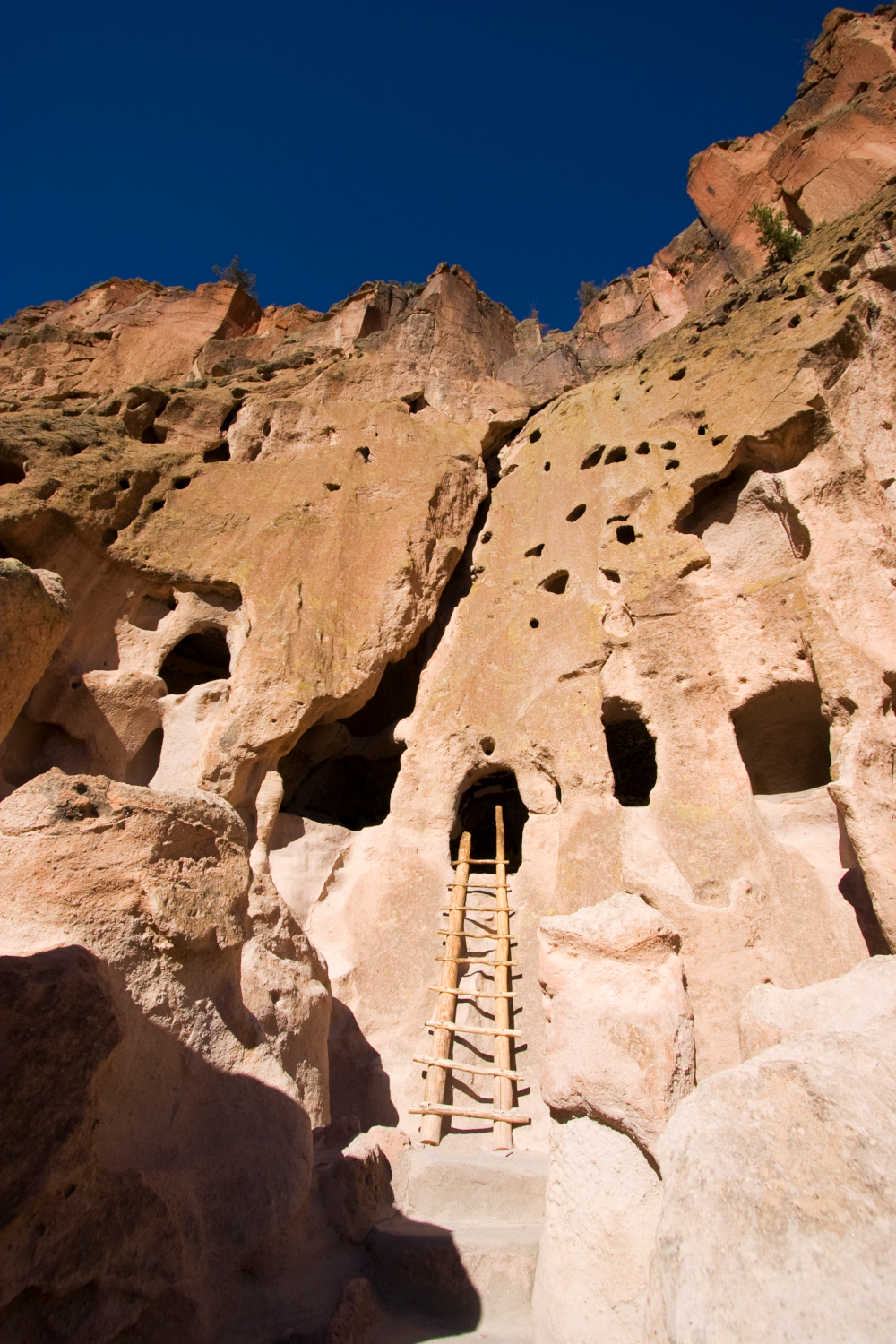
The Bandelier National Monument’s History
The human history of the Bandelier National Monument actually dates back over 10,000 years ago, when nomadic hunter-gathers would migrate through the area, crossing the hills and wandering through the canyons.
However, people didn’t build permanent settlements in the area until the 11th century BC. And even though construction occurred over 3,000 years ago, you can still see some evidence of the settlements to this day.
The natural history of Bandelier, however, takes us back to roughly 1.61 million years ago, when two large and violent volcanos erupted. These eruptions spewed out ash, rock, and pumice, which rained over a 1,500 square mile area.
After the volcano had erupted, it collapsed into itself and formed a circular depression in the Earth. You’ll find Bandelier on the outer slope of this circular depression along the Rio Grande River. From the ash that flowed through the landscape came tuff, which forms when hot ash cools and welds into rock.
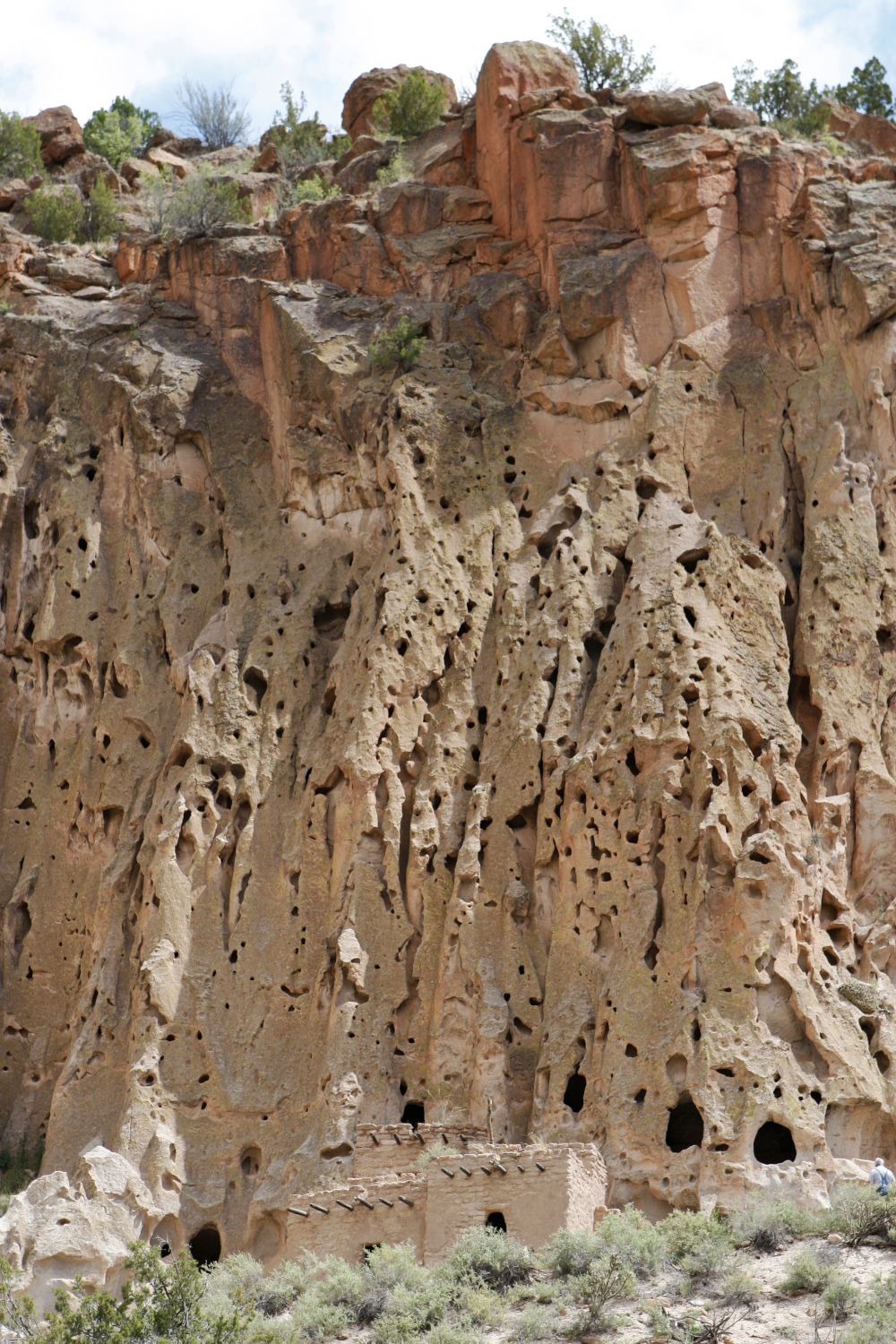
Tuff is the main reason Bandelier has intriguing holes in its canyon faces. Over time, water and wind gradually wore away at the tuff and formed some of the holes that many people visit Bandelier to see.
Furthermore, tuff is also the reason the Ancestral Pueblo people were able to build their homes in the Bandelier area. The surface was soft and easy to work with, meaning they could use hand tools to carve out shelters and build tuff bricks.
Getting to the Bandelier National Monument
Los Alamos is the closest city to the Bandelier National Monument.
To get to the Monument from Los Alamos, you should:
- Head down Diamond Drive towards the Los Alamos National Laboratory.
- Cross the Otowi Bridge and bear right.
- Once you’ve passed a set of lights, continue on to the Laboratory Vehicle Access Portal.
- There are green arrows indicating which lanes you can and can’t go down. Head down a green lane with your driver’s license on hand to show to the guard.
- Continue up Highway 501.
- At the next stop sign, turn left onto New Mexico 4 and follow the signs to the Bandelier National Monument.
- The Monument entrance is on your right.
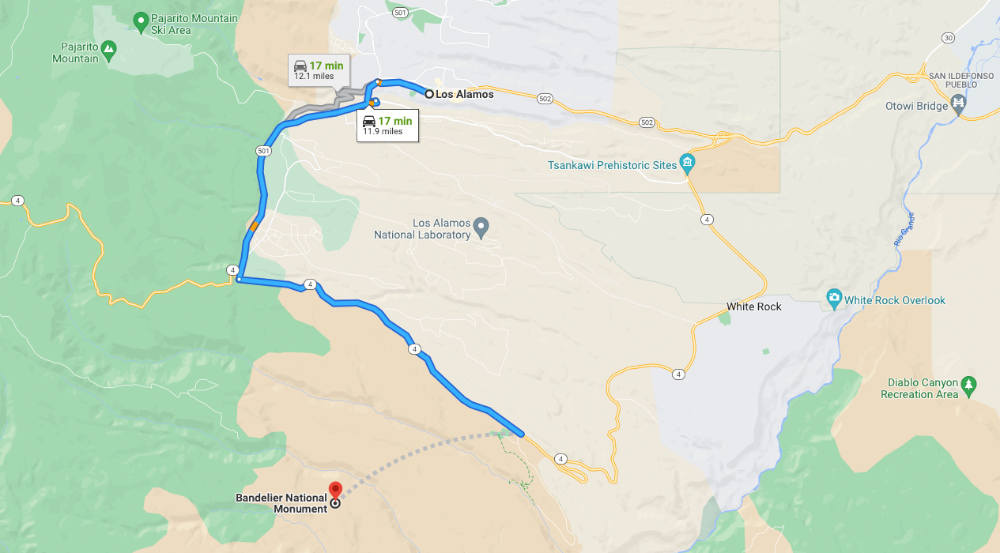
If you’ve spent some time at the Jemez Mountains and your next stop is the Bandelier National Monument, then you should:
- Head southeast on Camp May Road.
- Turn onto West Road.
- Merge onto the westbound NM-501.
- Turn left onto NM-4 E.
- Drive for 6 miles, and you’ll reach the National Monument.
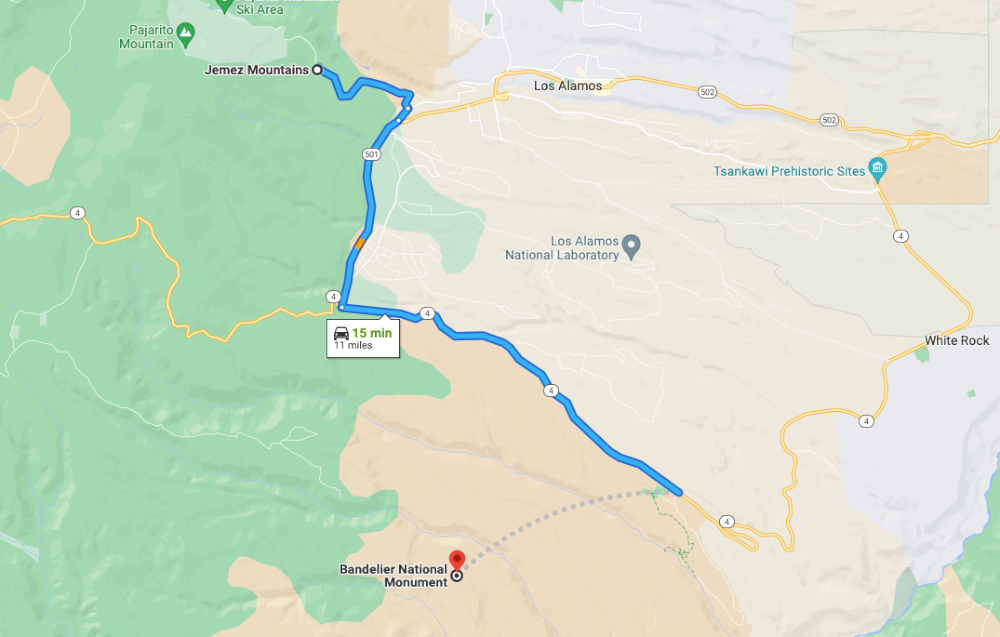
Note that the Monument has very limited parking. So, from May to October, you are required to park at the White Rock Visitor Center. From here, you can hop on a shuttle to the Monument, which runs from 9 am to 3 pm, every 30 minutes.
Bandelier’s shuttles will take you to the Main Loop Trail, the Falls Trail, and back to the Frijoles Canyon visitor center once you’ve finished your day exploring the Monument.
Things to Do at the Bandelier National Monument
We hope you have your hiking boots on, since most of your time at the Monument will be spent walking along trails exploring the incredible history and natural beauty that the area has to offer.
Bandelier National Monument Visitor Center
Before you head out into the designated wilderness of the Monument, we highly suggest making your way through the visitors center. There, you’ll find a museum that showcases the Monument’s history, and if you’re very lucky, you may even get to see a performance from the local Pueblo peoples.
Hiking
One of the main reasons people come to the Bandelier National Monument is for the hikes. And luckily, there are a few for you to choose from.
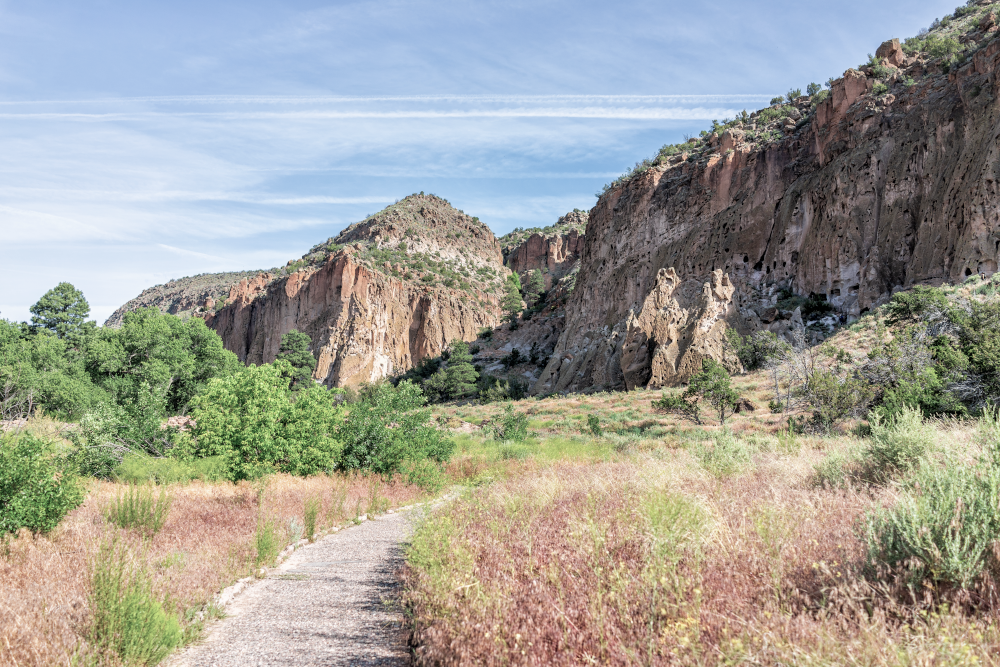
Main Loop Trail
The Main Loop Trail, aka the Pueblo Loop Trail, is an easy 45-minute-to-1-hour walk that will take you along some paved and pebbled paths and up a few sets of stairs.
On this hike, you’ll walk by excavated archeological sites, cliffside dwellings, and incredible canyon walls, all while discovering small alcoves and beautiful wildlife in the Frijoles Canyon.
Alcove House Trail
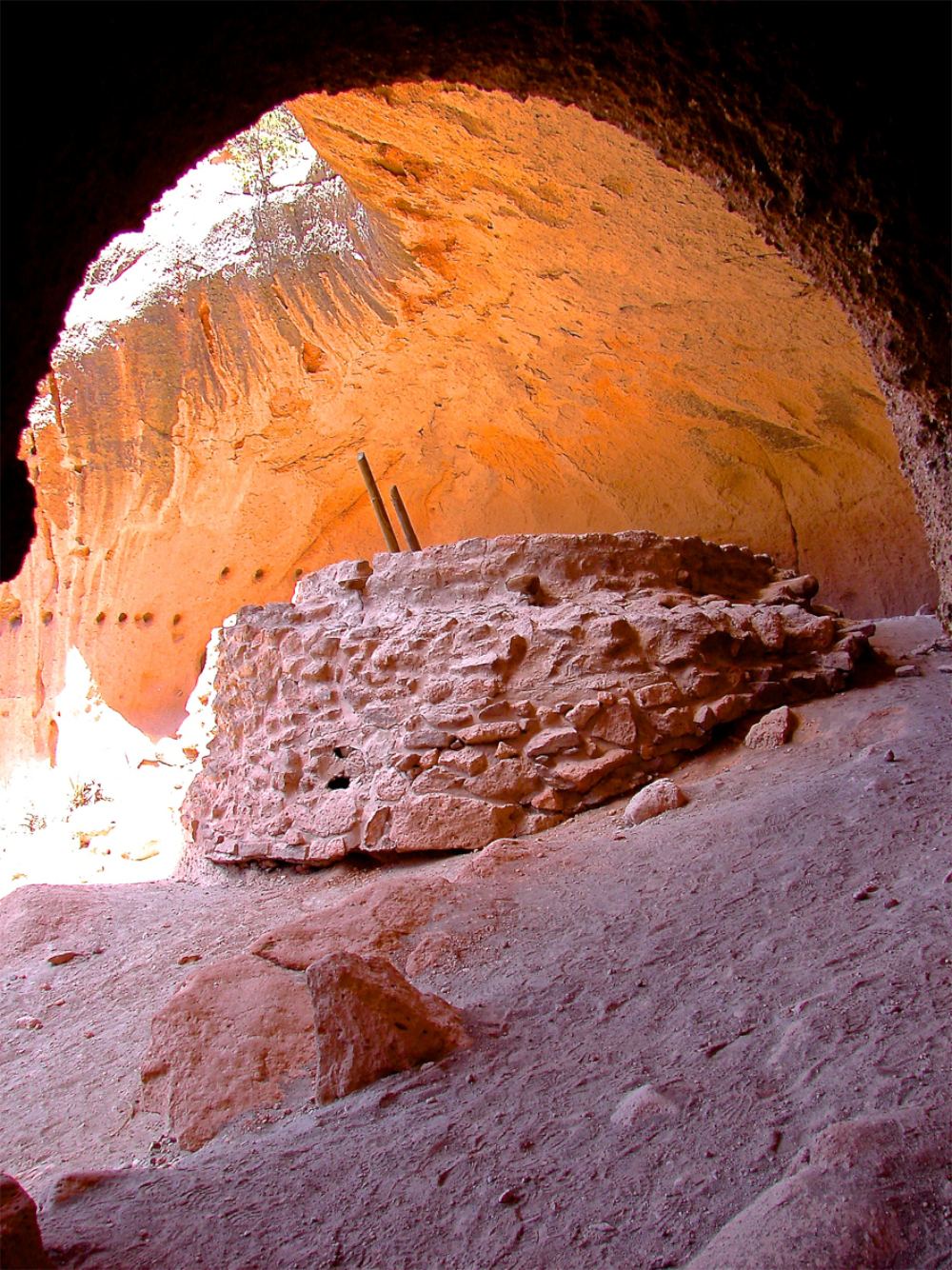
When you reach the halfway point of the Main Loop Trail, you’ll have to decide whether to continue the loop round and head back to the visitors center, or to turn onto the Alcove Trail.
The Alcove Trail — which you may know as the Ceremonial Cave — is 140 feet above the Frijoles Canyon.
The cave was once home to 25 Ancestral Pueblo people, and you can now reach it thanks to 4 wooden ladders and numerous stone stairs. The hike is roughly a mile each way from the Main Loop, and it will take you on average 45 minutes to an hour to complete.
Falls Trail
The Falls Trail is another popular trail at the Monument, which will eventually lead you down to the Frijoles Creek Waterfall. Expect to hike for just over an hour, depending on how fast you walk. If you pack your swimming gear, you can even take a dip once you reach the bottom.
Explore the Cliff Dwellings
On your hikes, you’ll come across numerous cliff dwellings that make the Monument so unique and interesting. We highly recommend taking your time to look around the cliff dwellings and seeing how the Ancestral Pueblo peoples lived all those years ago.

Visit the Bandelier CCC Historic District
The National Park Service once designed buildings for the Bandelier National Monument Civilian Conservation Corps (CCC) Historic District. These 31 buildings are inspired by Spanish Colonial and Pueblo traditions to match them to the Santa Fe style.
You can head over to the district to see the 31 unaltered buildings, which just so happen to be one the largest and most intact examples of CCC architecture.
Camping
If you want to spend several days at the Monument, you can head to one of the two campgrounds in the area. The first is the Juniper Campground, which works on a first-come, first-serve basis. The site doesn’t have any electrical hookups or showers, but it does have offer a public restroom.
The second campground is the Ponderosa Group Campground, for which you need to make reservations in advance.
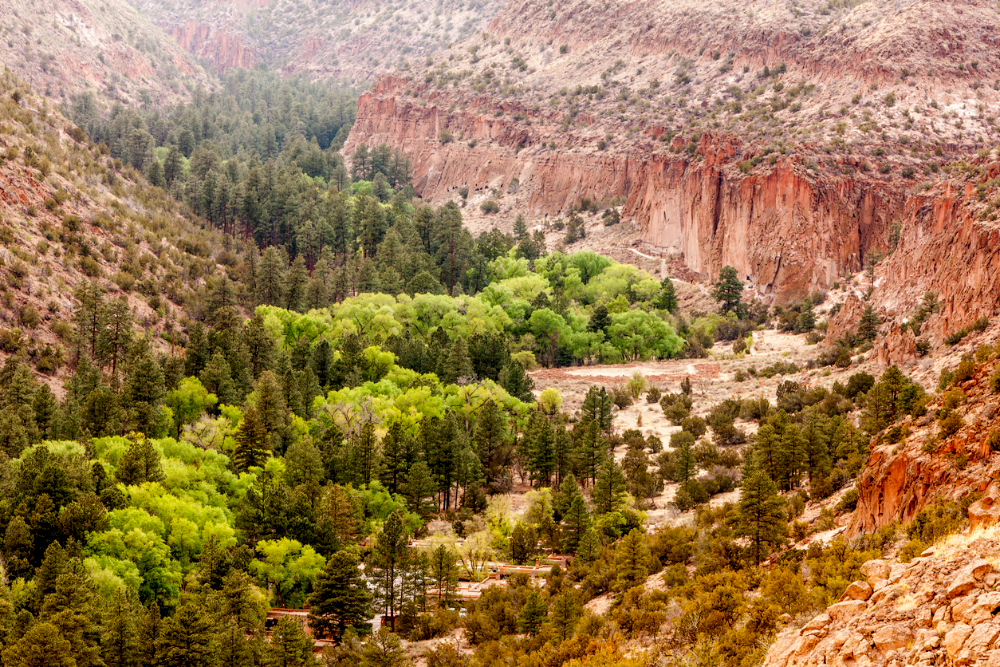
Ranger Led Tours
One of the best ways to learn about the Bandelier national historic landmark is to join a ranger-led tour. Rangers are not only knowledgeable about the area’s history, but they also know all the best places to visit, including those you may have missed if you headed out on your own.
Wildlife Watching
Wildlife is abundant at the Monument, and you can expect to see a variety of animals, from bats and squirrels to deer and mountain lions. Be sure to bring your binoculars and a camera so you don’t miss anything!

Bandelier National Monument Entry Fee
Bandelier is one of roughly 100 national parks that have an entrance fee. However, the good news is that all the money you pay goes back into maintaining the area; and in our opinion, that’s money well spent.
At the time of writing (June 2022), the prices for Bandelier are:
- Vehicles – $25
- Motorcycles – $20
- Individuals – $15
There are also days throughout the year when the park waives all entrance fees. But, as I’m sure you can imagine, these days happen to be the busiest, so it may be best to avoid them.
Best Time to Visit the Bandelier National Monument
The Bandelier National Monument is a fantastic place to visit all year round. That said, the most popular periods are in spring and fall. It’s no secret that these seasons are cooler, and cool weather is exactly what you’ll want while hiking at the Monument.

How Long You’ll Need at the Bandelier National Monument
On average, people spend around 3 hours at the Monument. But in our opinion, if you pack a lunch and plenty of water, you could spend all day wandering around the hiking trails and taking in all the surrounding natural beauty.
If you forget to pack your meals, there’s a full-service restaurant near the Bandelier Visitor Center. The restaurant serves full meals, grab-and-go snacks, coffee, and other beverages.
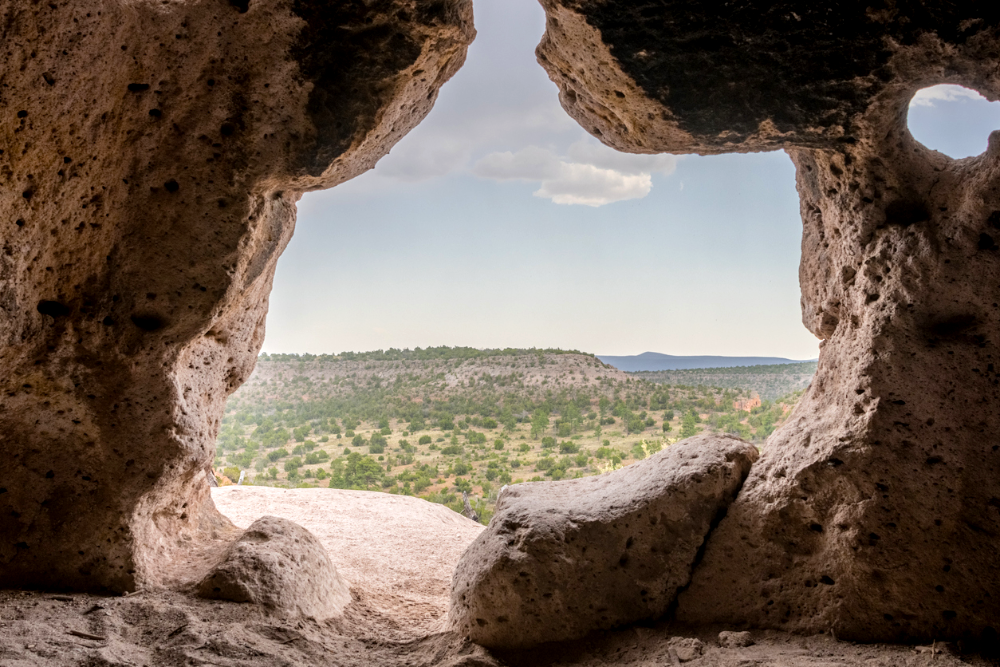
Our Final Thoughts
The Bandelier National Monument is not just a breathtaking natural landmark; it’s a place that’s teeming with ancient history. From the cliffside dwellings to the scenic hiking trails, you’re guaranteed to have an incredible day out in nature when visiting Bandelier.
As we finish up today, we would love to know your opinion on Bandelier. Have you ever visited? What was your favorite part? And, if you haven’t been, is it now on your bucket list?
Let us know your thoughts down in the comments below!



COMMENTS
Please note that all comments will be checked by our team before being approved.